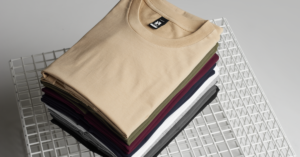How confident are you when it comes to workwear terminology? Do you know your vents from your yokes? Your DTG printing from your dye sublimation? If not, don’t worry.
Guide to Workwear Terminology
This handy jargon-busting guide will tell you everything you need to know.
Adjuster – A small device added to a garment to allow the wearer to tighten or loosen it according to their preference.
Anti-ESD – Electrostatic discharge (ESD) is common in laundry rooms or other very dry environments and can lead to a build-up of static electricity. Anti-ESD clothing contains an agent designed to counteract that build-up.
Blade width – This refers to the widest point of a tie.
CAD cut vinyl printing – A method of printing a design onto a garment by cutting it out of another fabric and applying it to the item of clothing via heat transfer.
Colourfastness – A test which is performed to ascertain how well a garment can retain its colours during wear and washing.

Composition – The different types of fibres which go into the creation of a garment (including the percentage of each).
Dart – A fold that is deliberately sewn into a garment in order to enhance its form.
Dimensional stability test – A test which is performed to ascertain how well a garment will resist shrinkage or stretching under extreme conditions.
DTG printing – Direct-to-garment (DTG) printing involves using an inkjet printer to print a design directly onto the fabric in question.
Dye sublimation – A method of printing a design onto a garment by first printing it onto a special kind of paper, then transferring it onto the clothing via heat transfer.
Easycare – A term which denotes that a garment does not require any special handling or care during the laundering process.
Embroidery – A method of decorating garments via the use of needle and thread as opposed to printing.
Fairtrade – A set of standards which ensures that ethical and sustainable practices were followed during the manufacture, supply and distribution of the garment in question.
Gauge – A term of measurement which refers to the closeness or thickness of the stitches in a knitted garment, wherein the lower the gauge, the heavier and thicker the garment.
GSM – Grams per square metre (GSM) is a term of measurement which refers to how heavy a garment is, wherein the higher the GSM, the heavier the garment.
Hook’n’bar – A method of fastening trousers at the waist to create a streamlined aesthetic.
Industrial laundry – A method of laundering clothing at very high temperatures, normally offered as a professional service by a third-party company.
Jetted pocket – A type of pocket (normally seen on trousers) which is cut into the fabric of the garment, thereby offering a discreet aesthetic.
Lining – An additional layer of material that is sewn on the interior of a garment to either enhance its appearance or to increase its insulating properties.
Mandarin collar – A type of collar which does not fold but instead stands upright, often seen on beauty tunics or chef’s jackets.
Oeko-Tex – An internationally recognised standard of certifying fabrics against the presence of any dangerous substances or chemicals during the manufacturing process.

Oxford shirt – A type of shirt using a basket weave that is normally made from a fabric heavier than standard cotton.
Pantone – A system of reference used to identify different colours and based upon the four main inks used when dying (cyan, key (or black), magenta and yellow).
Pique – A method of knitting which produces an intricate and finely-textured aesthetic appearance.
Polycotton – A type of fabric made from a mixture of cotton and polyester fibres.
Poplin – A type of fabric which uses tightly woven yarns to create a strong garment that’s smooth to the touch.
Quilting – A method of attaching two pieces of material together with a third, insulating layer placed in between.
Rib Knit – A type of knit which creates a pattern of vertical yarns and is both elastic and durable.
Screen printing – A method of printing a design onto a garment via squeezing ink through a mesh screen onto the fabric.
Tolerance – The acceptable margin for error between the original specifications for a garment and the finished product.
Transfer printing – A method of printing a design onto a garment by cutting it out of another fabric and applying it to the item of clothing via heat transfer (similar to CAD cut vinyl, but can use a larger palette of colours).
Vent – A small slit that is made in the cuff or hem of a shirt, blouse or trouser leg to allow for greater freedom of movement.
Waterproof – A type of fabric which is impervious to water.
Water-repellent – A type of fabric which has been treated with a surface coating to make it difficult for water to penetrate it.
Water-resistant – A type of fabric which is able to resist water penetration to a certain degree.
Wicking – A type of fabric (normally made from a sophisticated form of polyester) which absorbs moisture from the body.
Yoke – A shaped piece of material which normally fits around the hips or on the neck and shoulders to add a flourish or enhance support in a garment.




